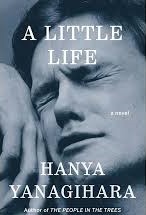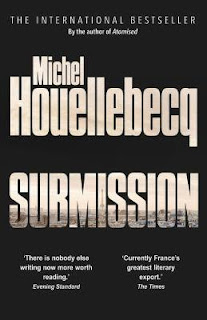Extraordinary Bonds
The friendships depicted in Hanya Yanagihara’s a award-winning, much feted novel A Little Life, seem almost fairytale-like. Can ordinary people love so unconditionally? Can real-life friendships be so selfless and pure?
In the book, four young roommates in college form a bond that lasts all their lives. The writer covers their journey from childhood to adulthood that includes remarkably successful careers. They are all very different in background and temperament, but something binds them tightly to each other.
Willem Ragnarsson, is the son of a Wyoming ranch hand, who works as a waiter in a posh restaurant while he waits to become an actor and soon attains stardom; Malcolm Irvine, the mixed race son of a wealthy family, becomes a celebrated architect; Jean-Baptiste (JB) Marion, is the son of Haitian immigrants, and after a few low-end jobs becomes a famous painter. However, the fulcrum around whom these lives revolve is Jude St. Francis, a lawyer and mathematician, whose past is a secret even to his friends. But he seems physically and emotionally damaged and won’t confide even the smallest problem to anyone—and he has been buried under a mountain of them.
Gradually it is revealed that Jude was dumped on a garbage can by unknown parents, and grew up in a monastery, because nobody else would have him. As the lives of the friends unfold—parties, romances, holidays, squabbles, career paths—Yanagihara uncovers layer by layer of Jude’s past—and it is horrific. The reader can only guess at the abuse he suffered at the monastery, but the real reasons for his physical and mental troubles comes much later, and the reader can only wonder at what inner reserves of strength Jude might have deployed to survive.
 He is lucky in the way how people he meets after his monstrous childhood and adolescence give him nothing but love and care—particularly Willem, his doctor Andy, the couple Harold and Julie who adopt his as their son, and many other buddies and colleagues who gather together to pull him out of every crisis—and the thick novel (800 odd pages)— is indulgent in creating fresh traumas for Jude. So damaged is he, that he can only face his mental demons by cutting himself and hurting his body even more.
He is lucky in the way how people he meets after his monstrous childhood and adolescence give him nothing but love and care—particularly Willem, his doctor Andy, the couple Harold and Julie who adopt his as their son, and many other buddies and colleagues who gather together to pull him out of every crisis—and the thick novel (800 odd pages)— is indulgent in creating fresh traumas for Jude. So damaged is he, that he can only face his mental demons by cutting himself and hurting his body even more.
Yanagihara covers almost half a century but curiously keeps the narrative within the circle—never letting the outside in; no time markers, for instance, or indicators of what is happening in the world around them.
As Jude suffering increases, as well as the disruptions in his friends’ lives, the novel abandons its optimistic tone and plunges into darkness, cruelty, and unbearable despair, that even overwhelming love cannot quite obliterate.
The first real indication of Jude state of mind comes when he wakes his flatmate Willem, saying, “There’s been an accident, Willem; I’m sorry.” Jude arm is wrapped in a blood-soaked towel. He refuses to go to a hospital, asking to be taken to Andy instead. Willem with his natural reserve, has been detached from Jude’s emotional turmoil, and is shocked when Andy, after stitching up and bandaging Jude tells him, “You know he cuts himself, don’t you?”
Jude believes he is ugly, deformed and disgusting—though others describe him as handsome—for him self-mutilation is his escape route. Interspersed with his anguish are sections of amazing tenderness, humour, sparkling conversations; also demonstrations of love that are sometimes harder to bear than Jude’s pain, because of what the one who offers that love is willing to sacrifice.
That’s why, in spite of its gloomy undertones, some harrowing passages of sexual abuse, and overdose of hysterical melodrama, A Little Life is a profoundly optimistic and life-affirming book. And one that puts friendship on an impossibly high pedestal.
A Little Life
By Hanya Yanagihara
Publisher: Anchor
Pages: 832





